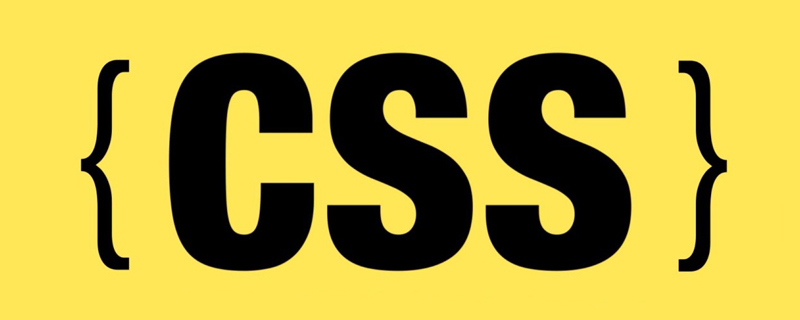Recently, I encountered an interesting problem by accident. I want to set the animation-duration value randomly. This is a non-random example:
This is an animation I wrote in CSS:
@keyframes flicker {
0% {
opacity: 1;
}
100% {
opacity: 0;
}
}
#red {
animation: flicker 2s ease alternate infinite;
}It currently works well. But there is no randomization here, and the animation execution time is fixed at 2s.
The animation I want is a random number whose execution time is within 2s. The effect I want is like this:
.element {
animation: flicker $randomNumber alternate infinite;
}The $randomNumber here is a random number generated by a specific function.
CSS preprocessor such as Sass provides such a function:
$randomNumber: random(5);
.thing {
animation-duration: $randomNumber + s;
}This may be what you want, but it is not what I want. The preprocessor generates random numbers. There is an obvious flaw:
Sass中,随机数生成过程就像是从一个故事中选择名字的过程,它仅仅在写完之后随机取出,然后它就不再变化了。 — jake albaugh (@jake_albaugh) 2016年12月29日
In other words, once the CSS preprocessor is executed, the randomization process is over, and the generated random number will be fixed to a value forever (that is, until The CSS preprocessor will be regenerated when it is run again. )
It does not generate random numbers when JavaScript is running like the random functions in JavaScript (such as Math.random()).
While deeply regretting it, I also realized that this was a perfect opportunity to use CSS variables (CSS’s own properties)! Although, using it to generate random numbers is not an easy task, they can still help us.
If you're not familiar with them, don't worry. In fact, CSS variables are a built-in feature of it, and are different from the variables you're already familiar with from CSS preprocessors like SASS and LESS. See the many benefits Chris lists here:
●You can use them without using preprocessing.
●They are cascaded. You can set the value of this variable or override the current variable reference in any selector.
●When their values change (such as media queries or other state changes), the browser will re-render.
●You can access them and manipulate them using JavaScript.
The last point is important to us. We generate random numbers in JavaScript and set the generated values to CSS variables.
Set a CSS custom property and give it a default value (this is useful in case JavaScript fails for some reason when writing the value):
/* 设置默认的动画执行时间 */
:root {
--animation-time: 2s;
}Now we You can use this variable in CSS like this:
#red {
animation: flicker var(--animation-time) ease alternate infinite;
}Without further ado, let’s get started immediately. Although this one looks like one of the previous SVG animations, this one is written using CSS variables. You can change the value of the variable to test how it works. And preview the effect in real time.
Now we use JavaScript to access and manipulate this variable:
var time = Math.random();
Here we can find the red circle created using SVG and use setProperty to change the value of --animation-time.
var red = document.querySelector('#red'); red.style.setProperty('--animation-time', time +'s');
Look here! A random number has been set to the SVG animation element:
Look at this example CSS random number #3 written by Robin Rendle (@robinrendle) on CodePen.
This is a big improvement over the previous one because its value is a random number generated when JavaScript is running, and it changes every time. This successfully achieves the effect we want, but we still have a little difficulty doing it: periodic animation-duration of a random number at runtime.
Luckily, we can now use JavaScript, we The value of a custom variable can be updated according to what we want. Here is an example where we update the value of animation-duration every second:
var red = document.querySelector('#red');
function setProperty(duration) {
red.style.setProperty('--animation-time', duration +'s');
}
function changeAnimationTime() {
var animationDuration = Math.random();
setProperty(animationDuration);
}
setInterval(changeAnimationTime, 1000);This is exactly what I want: Check out this example of CSS random numbers #4 by Robin Rendle (@robinrendle) on CodePen.
But you have to remember that the support for CSS variables (custom attributes) is still not very good, so be careful when using it. We can implement a progressive enhancement animation like this:
#red {
animation: flicker .5s ease alternate infinite;
animation: flicker var(--animation-time) ease alternate infinite;}If CSS variables are not supported we can also see part of the animation, although it is not the perfect look in my mind.
Thankfully, CSS variables are not the only way we can generate random animation-duration values. We can use JavaScript to manipulate the DOM and set the value directly to the style:
var red = document.querySelector('#red'); red.style.animationDuration = Math.floor(Math.random() * 5 + 1) + "s";
We can even wait for the animation to complete before setting a new time, if we want such an effect:
var red = document.querySelector('#red');
function setRandomAnimationDuration() {
red.style.animationDuration = Math.floor(Math.random() * 10 + 1) + "s";
}
red.addEventListener("animationiteration", setRandomAnimationDuration);This is just a list of possible ways to achieve this. You can also use EQCSS to achieve this effect:
@element '#animation' {
.element {
animation-duration: eval('rand')s;
}}var rand = Math.random();EQCSS.apply();
Do you want CSS itself to be able to generate correct random numbers? I have so far I haven’t seen any relevant information. Even if there is, it may take me a while before I can actually use it.
 css ul标签怎么去掉圆点Apr 25, 2022 pm 05:55 PM
css ul标签怎么去掉圆点Apr 25, 2022 pm 05:55 PM在css中,可用list-style-type属性来去掉ul的圆点标记,语法为“ul{list-style-type:none}”;list-style-type属性可设置列表项标记的类型,当值为“none”可不定义标记,也可去除已有标记。
 css与xml的区别是什么Apr 24, 2022 am 11:21 AM
css与xml的区别是什么Apr 24, 2022 am 11:21 AM区别是:css是层叠样式表单,是将样式信息与网页内容分离的一种标记语言,主要用来设计网页的样式,还可以对网页各元素进行格式化;xml是可扩展标记语言,是一种数据存储语言,用于使用简单的标记描述数据,将文档分成许多部件并对这些部件加以标识。
 css3怎么实现鼠标隐藏效果Apr 27, 2022 pm 05:20 PM
css3怎么实现鼠标隐藏效果Apr 27, 2022 pm 05:20 PM在css中,可以利用cursor属性实现鼠标隐藏效果,该属性用于定义鼠标指针放在一个元素边界范围内时所用的光标形状,当属性值设置为none时,就可以实现鼠标隐藏效果,语法为“元素{cursor:none}”。
 css怎么实现英文小写转为大写Apr 25, 2022 pm 06:35 PM
css怎么实现英文小写转为大写Apr 25, 2022 pm 06:35 PM转换方法:1、给英文元素添加“text-transform: uppercase;”样式,可将所有的英文字母都变成大写;2、给英文元素添加“text-transform:capitalize;”样式,可将英文文本中每个单词的首字母变为大写。
 rtl在css是什么意思Apr 24, 2022 am 11:07 AM
rtl在css是什么意思Apr 24, 2022 am 11:07 AM在css中,rtl是“right-to-left”的缩写,是从右往左的意思,指的是内联内容从右往左依次排布,是direction属性的一个属性值;该属性规定了文本的方向和书写方向,语法为“元素{direction:rtl}”。
 css怎么设置i不是斜体Apr 20, 2022 am 10:36 AM
css怎么设置i不是斜体Apr 20, 2022 am 10:36 AM在css中,可以利用“font-style”属性设置i元素不是斜体样式,该属性用于指定文本的字体样式,当属性值设置为“normal”时,会显示元素的标准字体样式,语法为“i元素{font-style:normal}”。
 怎么设置rotate在css3的旋转中心点Apr 24, 2022 am 10:50 AM
怎么设置rotate在css3的旋转中心点Apr 24, 2022 am 10:50 AM在css3中,可以用“transform-origin”属性设置rotate的旋转中心点,该属性可更改转换元素的位置,第一个参数设置x轴的旋转位置,第二个参数设置y轴旋转位置,语法为“transform-origin:x轴位置 y轴位置”。


Hot AI Tools

Undresser.AI Undress
AI-powered app for creating realistic nude photos

AI Clothes Remover
Online AI tool for removing clothes from photos.

Undress AI Tool
Undress images for free

Clothoff.io
AI clothes remover

AI Hentai Generator
Generate AI Hentai for free.

Hot Article

Hot Tools

SAP NetWeaver Server Adapter for Eclipse
Integrate Eclipse with SAP NetWeaver application server.

Dreamweaver Mac version
Visual web development tools

ZendStudio 13.5.1 Mac
Powerful PHP integrated development environment

Atom editor mac version download
The most popular open source editor

SublimeText3 Linux new version
SublimeText3 Linux latest version







